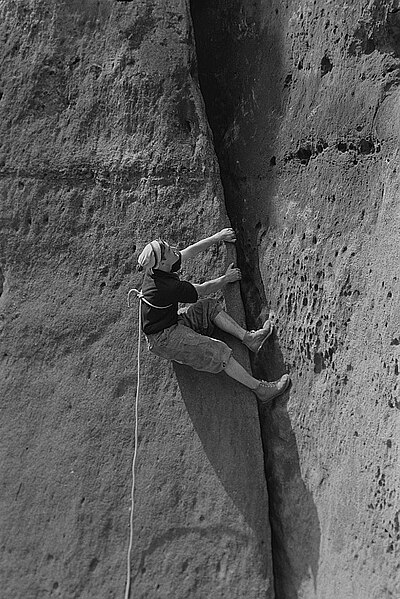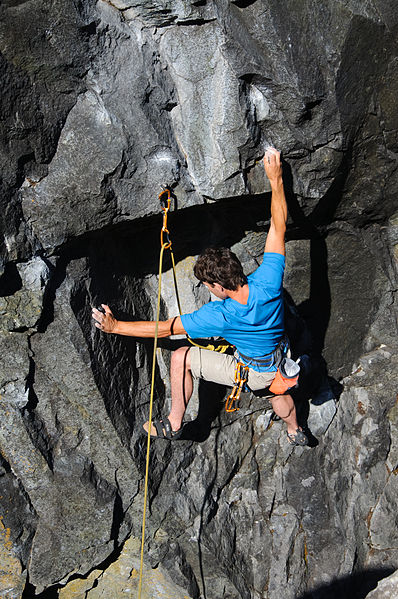Spring-loaded camming device
A spring-loaded camming device is a piece of rock climbing or mountaineering protection equipment. It consists of two, three, or four cams mounted on a common axle or two adjacent axles, so that pulling on the axle forces the cams to spread farther apart. This is then attached to a sling and carabiner at the end of the stem. The SLCD is used by pulling on the "trigger" so the cams retract together, then inserting it into a crack or pocket in the rock and releasing the trigger to allow the cams to expand. A pull on the rope, such as that generated by a climber falling, will cause a properly placed SLCD to convert the pulling force along the stem of the unit into outwards pressure on the rock, generating massive amounts of friction and preventing the removal of the unit from the rock. Because of the large forces which are exerted on the rock when an SLCD is fallen on, it is very important that SLCDs are only placed in solid, strong rock.

A selection of spring-loaded camming devices of differing sizes
Climbers often carry a large number of cams on traditional climbs.
Use of a cam in a large crack
Rock climbing is a sport in which participants climb up, across, or down natural rock formations or indoor climbing walls. The goal is to reach the summit of a formation or the endpoint of a usually pre-defined route without falling. Rock climbing is a physically and mentally demanding sport, one that often tests a climber's strength, endurance, agility and balance along with mental control. Knowledge of proper climbing techniques and the use of specialized climbing equipment is crucial for the safe completion of routes.
A rock climber approaches a roof while leading a multi-pitch, traditional route in Custer State Park, United States.
Climbing in Germany, circa 1965.
Man sport climbing under overhang
Bouldering in Joshua Tree National Park, United States







